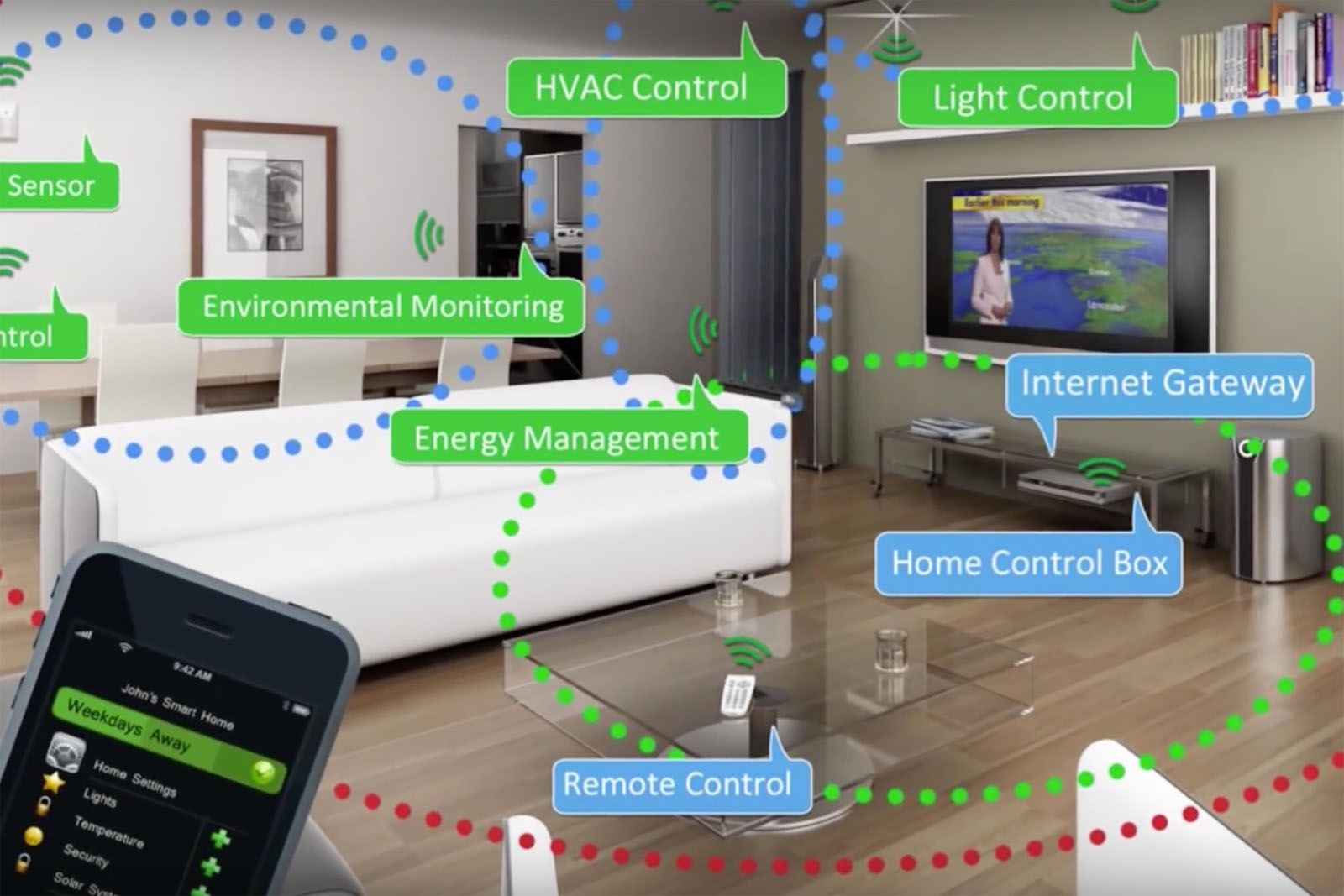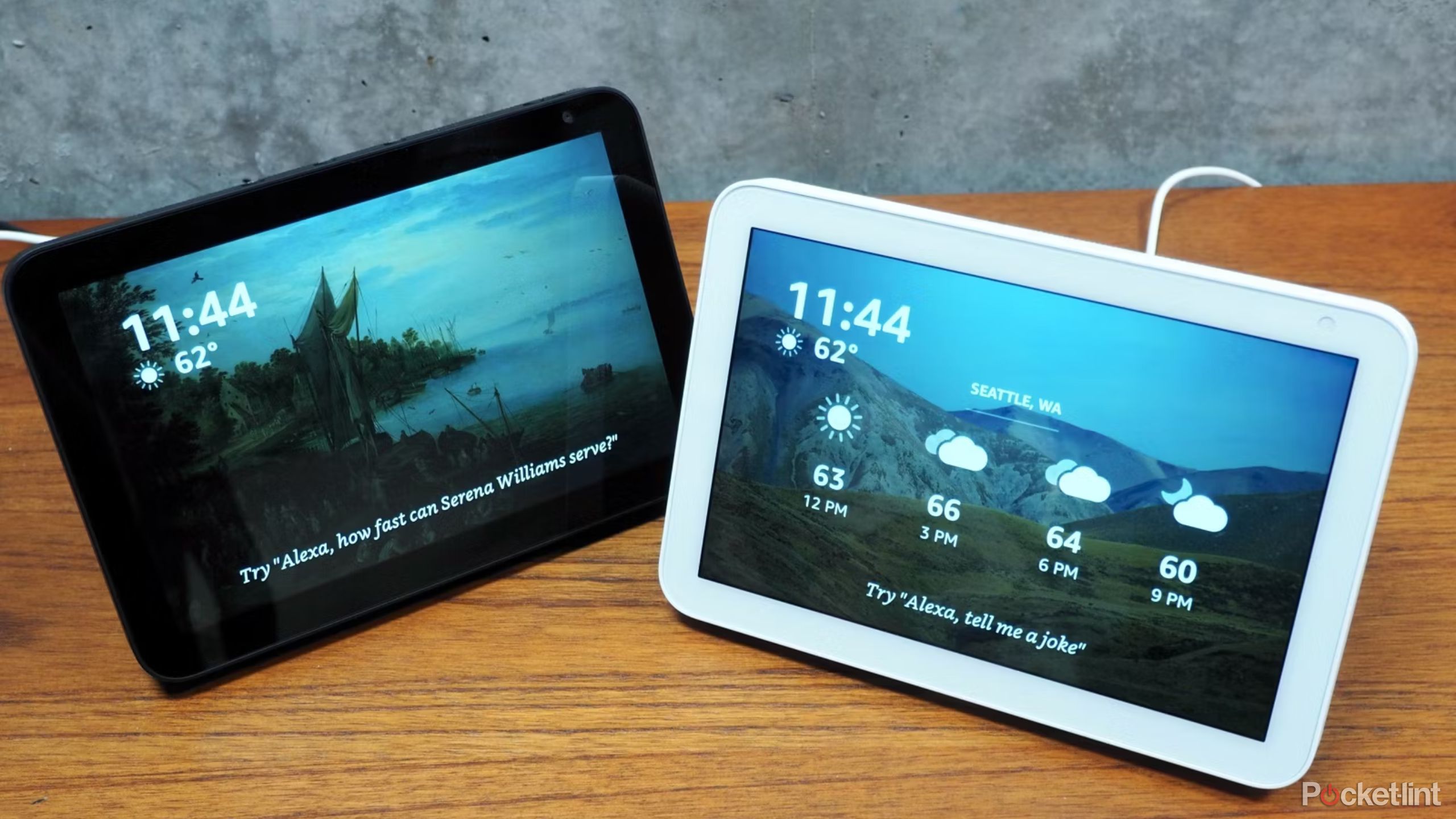Key Takeaways
- Smart home hubs help integrate devices with different protocols using Zigbee, Bluetooth, and Wi-Fi in one system.
- Zigbee requires less power, supports battery-powered devices, and creates a mesh network for devices far from the hub.
- Certain Amazon Echo models have built-in Zigbee support, allowing direct control of Zigbee devices without an additional hub.
One downside of smart home devices is that many of them use different communication protocols, making it hard to integrate everything into one system. Your smart plug might communicate over Matter, while your smart doorbell send data over over Wi-Fi. Add to that smart light bulbs that connect over Bluetooth or Zigbee, and you can see how things can quickly get complicated.
Amazon Echo Hub review: The best Echo yet for your smart home
Controlling your Alexa smart home with touch finally catches up with voice.
That’s where a smart home hub can help. This is a device that acts as the go-between for all of your smart home devices, relaying instructions and receiving information from your devices. Amazon Echo devices are a good choice as a smart home hub, as they’re relatively affordable and compatible with a wide range of smart home gear. It also means you can control your smart home gadgets just by asking something of Alexa.
However, until fairly recently Echo devices weren’t ideal for controlling Zigbee smart home devices. Many Echo models don’t feature Zigbee support, which means you need to buy a separate hub to use Zigbee-compatible devices. Thankfully, several Echo models now come with Zigbee built-in, allowing you to control Zigbee devices directly from your Echo with no additional hub. Here’s how to set up a Zigbee device with an Amazon Echo.
What is Zigbee?
The low-power communication protocol
Zigbee is a wireless communication protocol that allows electronic devices to talk to one another. Rather than transfering data at high speeds like Wi-Fi, Zigbee has a much slower data transfer rate. This means Zigbee devices require less power than their Wi-Fi counterparts.

What is Zigbee and why is it important for your smart home?
Zigbee is a widely used smart home protocol even integrated in Amazon Echo, so here’s everything you need to know about it.
Another key difference between the two protocols is that multiple Zigbee devices can work together to create a mesh network. Unlike Wi-Fi, where each device on your network communicates directly with your router, in a Zigbee mesh network, each device can act as a repeater. This means that one Zigbee device can transmit information to the next, creating a daisy chain linking each Zigbee device back to the hub. Even Zigbee devices that are a long way from the hub can communicate with it by passing the information back and forth through the network of connected devices.
Why use Zigbee smart home devices?
Ideal for smart home tech that’s far from your hub
There are some excellent reasons why many smart home devices use Zigbee as a method of communication. The first is that due to the low-power nature of Zigbee, it’s possible to run smart home devices on battery power rather than requiring a permanent power source. This is particularly useful for devices such as door or window sensors or temperature and humidity sensors, which won’t always be within easy reach of a power source. It gives you the freedom to place your Zigbee smart home devices wherever you want without worrying about having to plug them in.
Another benefit is that thanks to the mesh network nature of Zigbee, you can place smart home devices as far away from the smart home hub as you wish, as long as you have other Zigbee devices in between that can relay the information. If you’ve ever struggled to connect a Wi-Fi smart home device because it’s too far away from your router, using Zigbee devices can solve those problems.
Which Echo devices have Zigbee built in?
It’s found in many of the latest generation of Echo devices
Amazon has started building Zigbee into some of its Echo devices. This allows you to connect your Zigbee devices directly to your Echo without the need for an additional Zigbee hub. Compatible Echo devices can communicate directly with Zigbee devices to pass on smart home commands or receive data from your smart home sensors.
Currently, the following Echo devices have Zigbee support built-in:
How to set up a Zigbee device with Amazon Echo
If you own a compatible Echo device, you can connect your Zigbee devices directly to your Echo through the Alexa app. There’s no need to set up an additional Zigbee hub as long as you’re using one of the Echo devices listed.
- Open the Alexa app and tap Devices at the bottom of the screen.
- Click the + (plus) icon in the top-right corner of the screen.
- Select Add Device.
- Under All Devices, scroll to the bottom and tap Other.
- Select Zigbee.
- Put your Zigbee device into pairing mode by following the manufacturer’s instructions. This often involves holding down a button until the lights on the device start to flash.
- Tap Discover Devices in the Alexa app.
- Alexa will search for available devices. This can take up to a minute.
- If all goes well, your Zigbee device will be discovered by Alexa.
- Tap Set Up Device.
- You can add your device to a group or skip this for now.
- Your Zigbee device should now be ready to use. You can now control it with your voice, or use it as part of your Alexa routines
FAQ
Q: How useful is it to set up a Zigbee device with Amazon Echo?
Although it’s possible to connect Zigbee devices directly to an Amazon Echo, it isn’t always necessarily the best thing to do. With some smart devices, you may not get all of the features of your Zigbee device if you connect directly through Alexa rather than through the specific Zigbee hub for your smart home device.
For example, I own a Zigbee Aqara temperature and humidity sensor which I was able to connect directly through my Echo Hub, but as a result, I can only see the temperature reading and not the humidity. I was also able to connect a Philips Hue dimmer switch directly to my Echo Hub, but I couldn’t use this to trigger automations like I can if the dimmer is connected through the Hue bridge.
Some Zigbee smart home devices are designed specifically to work with Alexa, however. Smart home devices from Third Reality, for example, are set up to work with a direct connection to your Echo device.
Q: Can I set up Zigbee devices with Amazon Echo if it doesn’t support Zigbee?
Echo Dot
, you can still connect your Zigbee devices to Alexa. However, in order to do so, you’ll need to use an additional Zigbee hub. Many smart home manufacturers sell their own proprietary Zigbee hubs. For example, you can buy an Aqara Hub to control your Aqara smart home devices. You can then use the Aqara skill to link Alexa to your smart hub, allowing you to control your Aqara devices by asking Alexa.
The same applies to Philips Hue lights. You can set up the Hue Bridge which is a Zigbee hub that can control your lights. Using the Hue skill in Alexa, you can link your Echo to your Hue Bridge, and control your Zigbee lights using your voice.
Trending Products
















